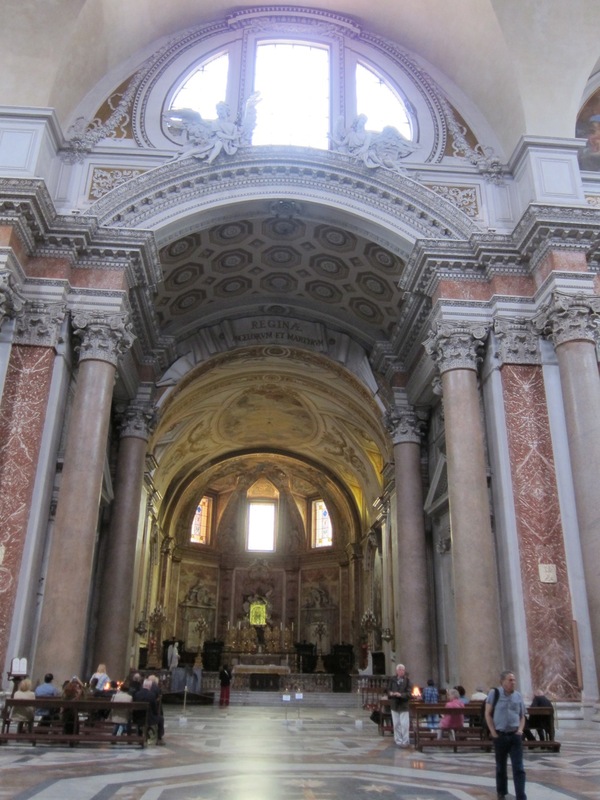The Bathing Experience
The Baths of Diocletian were a site of clamorous noises of sport and conversation, scents of sweat and fragrant oil, uplifting views of architectural space and dramatic steam, and extreme sensations of hot and cold. Fikret Yegül, a preeminent scholar of Roman baths, writes that "the sense of touch, merged into the sense of sight and sound, was paramount" in the bathing experience.1 Within tactile sensation, sense of temperature was where the Baths of Diocletian offered the greatest intensity of variety – in bathing pools, in steam rooms, and on heated floors. These sensations would be an unforgettable part of a bather’s daily life. As Diane Favro argues, multi-sensory experiences played a strong role in forming and prioritizing memories in relation to Roman monuments;2 these Baths, with their grand scale, would be experienced and remembered as vital and impressive.
Bathing was also a highly social experience, not just a sensory one.3 Throughout the experience, bathers demonstrated and negotiated social status. For example, carrying one's own change of clothes instead of arriving with an attendant connoted a lower status. The Baths of Diocletian were a site of constant exchange of ideas through study in libraries and, more vitally, conversation in exedra.
A typical bather would start a trip to the Baths with outdoor athletics and then cycle through different bathing rooms, transitioning from cold to hot rooms. Explore the next sections of this exhibit to learn about the different stages of the bathing experience.
___________
1. Fikret K. Yegül, Bathing in the Roman World (Cambridge: Cambridge University Press, 2010), 128.
2. Diane Favro, “Moving Events: Curating the Memory of the Roman Triumph,” in Memoria Romana: Memory in Rome and Rome in Memory, ed. Karl Galinsky (Rome: American Academy in Rome, 2014), 85-101.
3. Yegül, 6.
